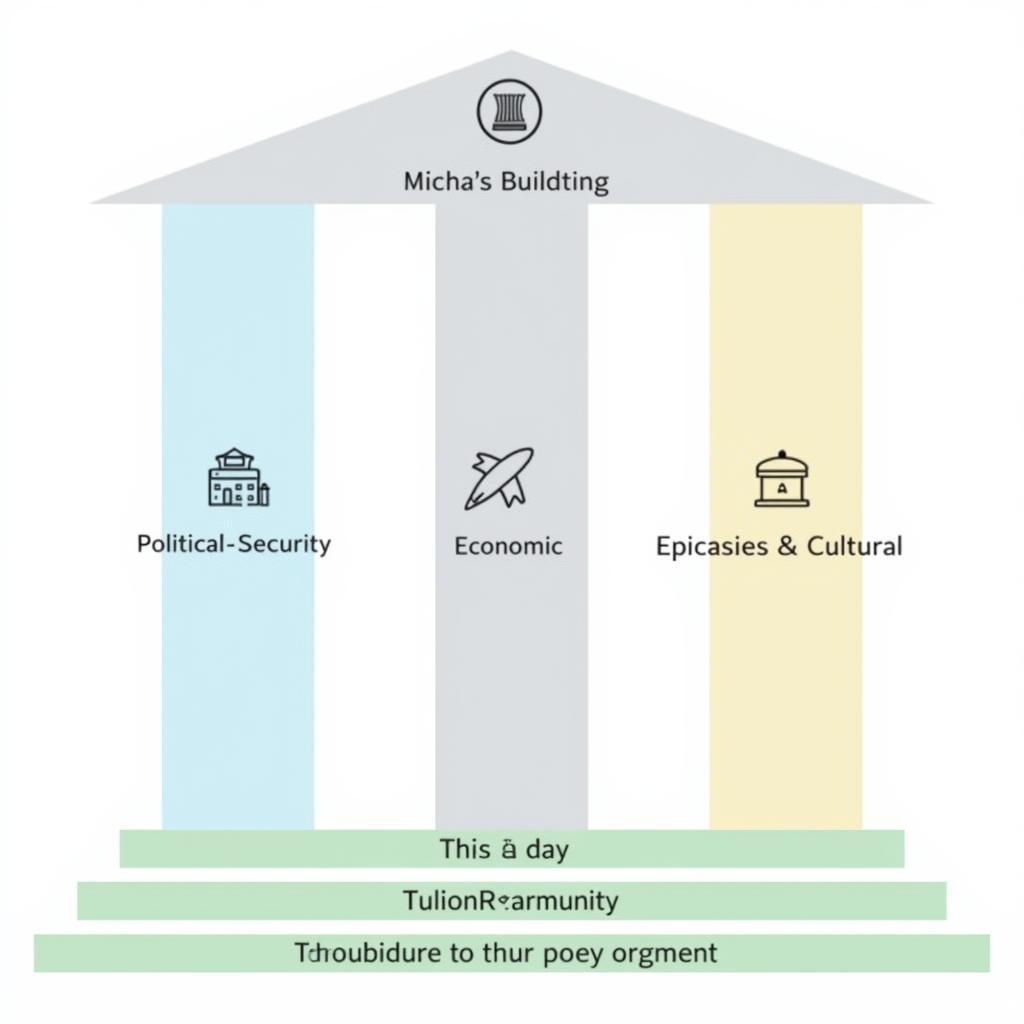The ASEAN Community, a dynamic and diverse regional bloc, is transforming Southeast Asia. This article delves into the core aspects of the ASEAN Community, exploring its history, pillars, achievements, and future prospects.
 The Three Pillars of the ASEAN Community: Political-Security, Economic, and Socio-Cultural
The Three Pillars of the ASEAN Community: Political-Security, Economic, and Socio-Cultural
Understanding the ASEAN Community: A Brief Overview
The Association of Southeast Asian Nations (ASEAN) was established in 1967 with the signing of the Bangkok Declaration. Initially focused on political cooperation and regional stability, ASEAN has evolved into a multifaceted organization encompassing economic, socio-cultural, and political-security cooperation. The vision of the ASEAN Community, formally established in 2015, is to create a highly integrated and cohesive region. This entails fostering peace, stability, and shared prosperity among its member states. What exactly does the ASEAN Community entail? It’s built on three fundamental pillars, which we’ll explore in detail.
The Three Pillars of the ASEAN Community
The ASEAN Community is built upon three interconnected pillars: the Political-Security Community, the Economic Community, and the Socio-Cultural Community. These pillars represent a holistic approach to regional development, ensuring that progress is made across all key areas.
The Political-Security Community
This pillar aims to ensure a peaceful and stable region. It focuses on promoting dialogue, conflict prevention, and cooperative security mechanisms. This involves fostering trust and confidence among member states, addressing transnational crime, and promoting good governance and the rule of law.
The Economic Community
The ASEAN Economic Community (AEC) seeks to create a single market and production base, characterized by the free flow of goods, services, investments, skilled labor, and freer flow of capital. The AEC strives to create a competitive economic region fully integrated into the global economy. This involves reducing trade barriers, harmonizing regulations, and promoting regional connectivity.
achieving skill mobility in the asean economic community
The Socio-Cultural Community
This pillar aims to foster a sense of community and shared identity among ASEAN peoples. It promotes social development, environmental protection, and cultural exchange. This involves enhancing educational cooperation, protecting human rights, and promoting social justice and equity.
What are the Benefits of the ASEAN Community?
The ASEAN Community offers numerous benefits to its member states and the wider region. These include:
- Enhanced economic opportunities through increased trade and investment
- Greater regional stability and security through enhanced cooperation
- Improved social development and cultural understanding
- A stronger and more unified voice on the global stage
aec asean economic community adalah
Challenges and Opportunities for the ASEAN Community
While the ASEAN Community has made significant strides, it still faces several challenges. These include:
- Narrowing the development gap between member states
- Addressing non-traditional security threats such as climate change and pandemics
- Strengthening regional institutions and mechanisms
artikel masyarakat ekonomi asean
Despite these challenges, the ASEAN Community has immense potential. With its young and dynamic population, strategic location, and abundant natural resources, ASEAN is poised for continued growth and development.
aec asean economic community countries
Conclusion: The ASEAN Community – A Region on the Rise
The ASEAN Community represents a bold vision for regional integration and cooperation. By working together, ASEAN member states can overcome challenges and achieve their shared goals of peace, prosperity, and a vibrant future. The ASEAN Community is not just about economic growth; it’s about building a better future for all the people of Southeast Asia.
FAQ
- What are the 10 member states of ASEAN?
- When was the ASEAN Community officially established?
- What is the main goal of the AEC?
- How does the ASEAN Community address climate change?
- What are some of the cultural exchange programs under the Socio-Cultural Community?
- How can I learn more about the ASEAN Community?
- What are the current challenges facing the ASEAN Community?
For further support, please contact us at Phone Number: 0369020373, Email: [email protected] Or visit our address: Ngoc Lien Village, Hiep Hoa, Bac Giang, Vietnam. We have a 24/7 customer service team.
